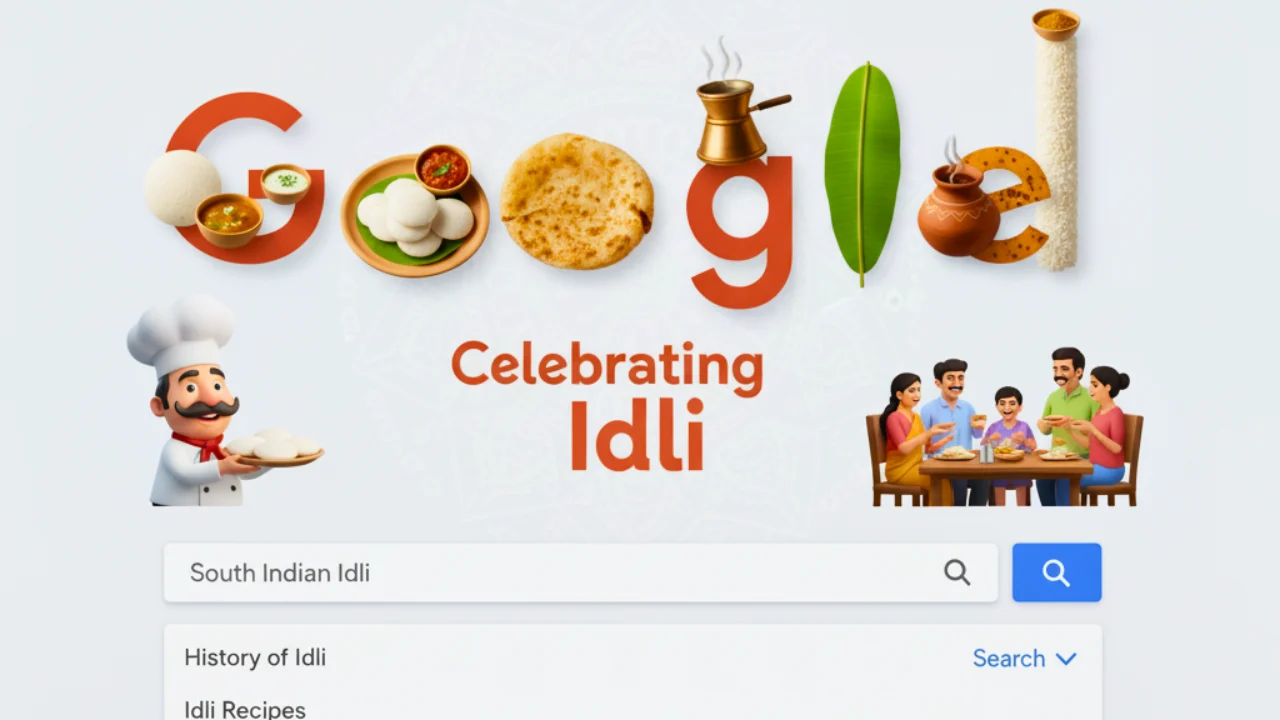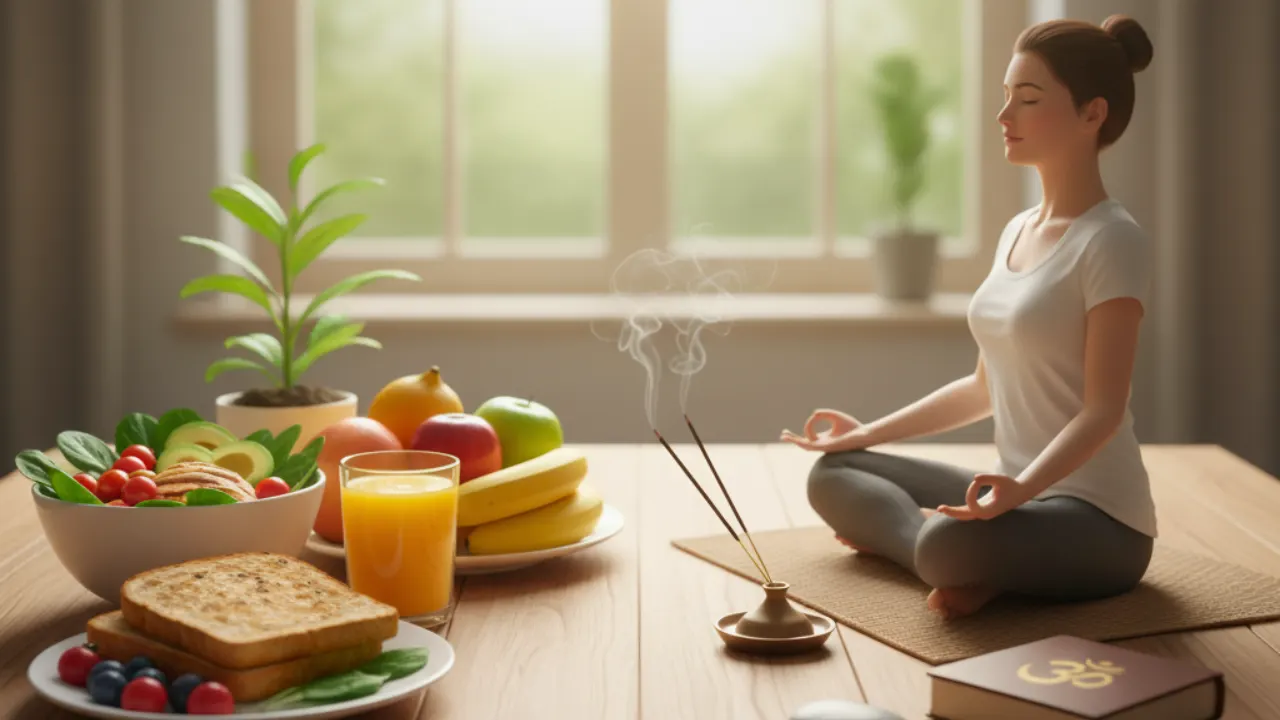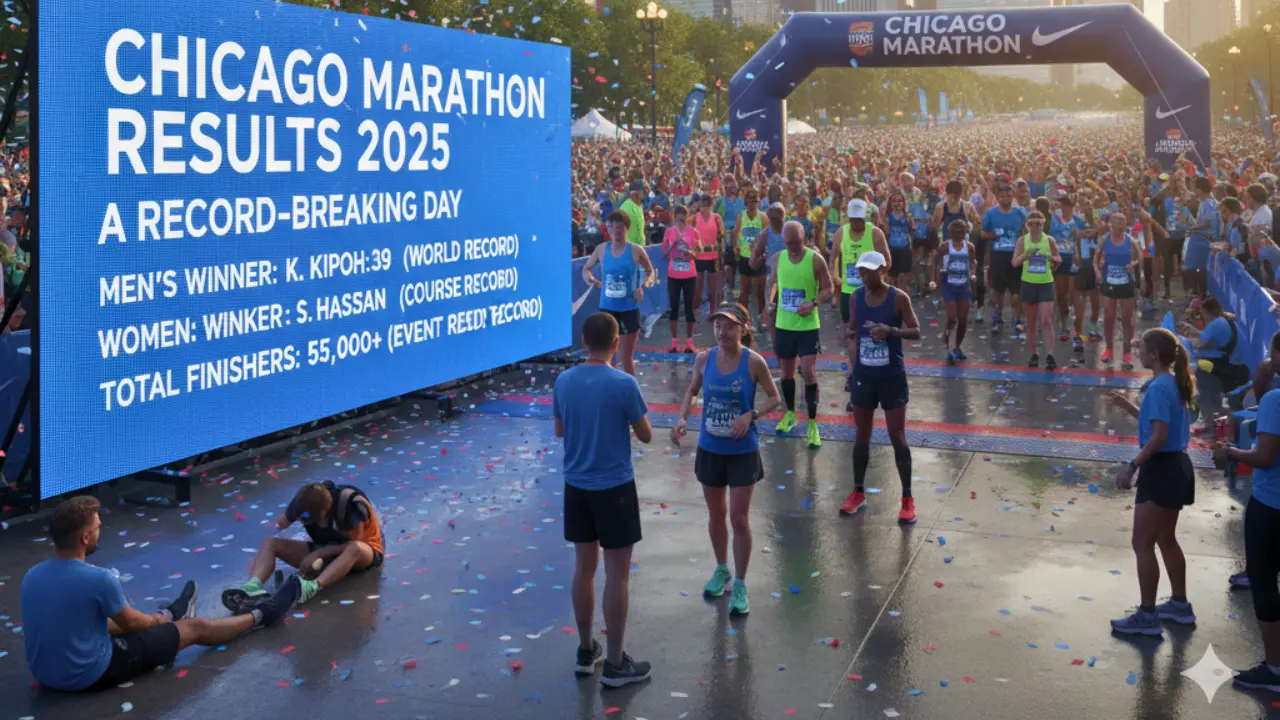Google Doodle Today Idli: Idli, the light, steamed South Indian delicacy that has been a breakfast staple for millions, received global attention as Google dedicated a Special Doodle to it on October 11. The artwork transformed the Google homepage into a tribute to the iconic dish, celebrating its simplicity, cultural depth, and emotional connection with Indian households. While World Idli Day is marked on March 30 every year, Google’s tribute this time was not tied to any anniversary but rather served as a cultural acknowledgment of India’s rich culinary legacy.
Google’s Tribute to Idli: A Quick Insight
Google honoured the traditional South Indian dish with a beautiful Doodle that depicted the entire idli-making process right from rice grains to batter steaming in traditional moulds. The Doodle featured idlis placed on a banana leaf alongside chutneys and sambar, recreating an authentic South Indian meal visual. Social media platforms were flooded with #IdliLove posts, as users share nostalgic memories of the dish that has been part of Indian homes for generations.
Key Takeaways from Google’s Idli Doodle Celebration
- Google featured a dedicated Idli Doodle on October 11, 2025 exclusively on its Indian homepage.
- The Doodle is part of Google’s ongoing “Food and Drink” cultural series.
- Each letter of the Google logo was creatively turned into idlis, batter bowls, chutneys and sambar.
- Idli is celebrated as a vegan, gluten-free, protein-rich superfood.
- Trending on X and Instagram, #IdliLove brought nostalgic and emotional reactions online.
- Historians debate idli’s origin; some claim it evolved from Indonesia or Arabia.
- The tribute symbolises India’s culinary heritage and cultural unity.
What Makes Idli So Special?
Idli is more than just food, it is a comforting memory, a symbol of home, and a dish that connects generations. Whether served on a steel plate in a South Indian kitchen, packed in tiffin boxes for schoolchildren, or offered on banana leaves at weddings, idli has been a part of India’s everyday life. It is light on the stomach, yet rich in nutrition owing to fermentation, which enhances digestion and gut health.
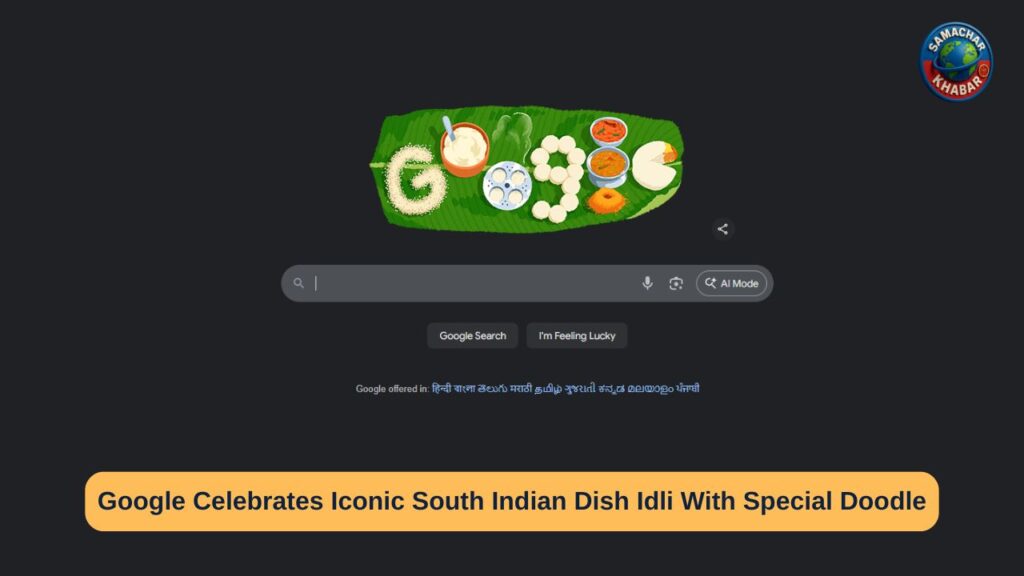
Google referred to idli as “a savoury, steamed South Indian cake made from a fermented batter of rice and urad dal.” It is not just a culinary item but a tradition passed down through families, preserved and celebrated through time.
The Creative Essence of the Doodle
The Doodle artist recreated the Google logo through visual elements of idli preparation:
G – Designed using raw rice grains
O – A bowl representing soaked rice
O – Idli batter being poured into traditional moulds
G – Several small, fluffy steamed idlis
L – Formed by colourful chutneys
E – A traditional sambar serving
The entire layout rested beautifully on a banana leaf, a traditional South Indian serving style.
Why October 11?
Interestingly, this tribute does not align with World Idli Day (March 30). Google often selects cultural elements to spotlight, celebrating traditions that bind communities. October 11 was chosen not for a historic reason but for a cultural purpose to honour a timeless Indian dish that reflects simplicity and unity.
Also Read: Google Turns 27: From Garage Startup to Global Tech Giant, A Nostalgic Doodle Marks the Journey
Debates Around Idli’s Origin
While idli is proudly celebrated as Indian, there has been historical debate surrounding its origin:
- Indonesian Theory – Food historian KT Achaya suggests Indian cooks in Indonesia brought back the steamed rice cake technique to South India during medieval times.
- Arab Theory – Another theory claims Arab traders who settled in South India made rice cakes that evolved into idlis.
Regardless of its debated origin, idli evolved in South Indian households, taking its present form and becoming a deeply rooted Indian tradition.
The Evolution of Idli: More Than Just One Dish

Over time, idli has adapted across regions and lifestyles:
- Traditional rice and urad dal idli
- Rava idli (popularised in Karnataka)
- Mini idli with sambar
- Ragi idli for health-conscious diets
- Oats idli and quinoa idli
- Fried idlis tossed in podi masala
Modern chefs have taken idli further, turning it into sliders, snacks, fusion appetizers, and street-style delicacies.
Social Media Reaction: A Plate Full of Emotions
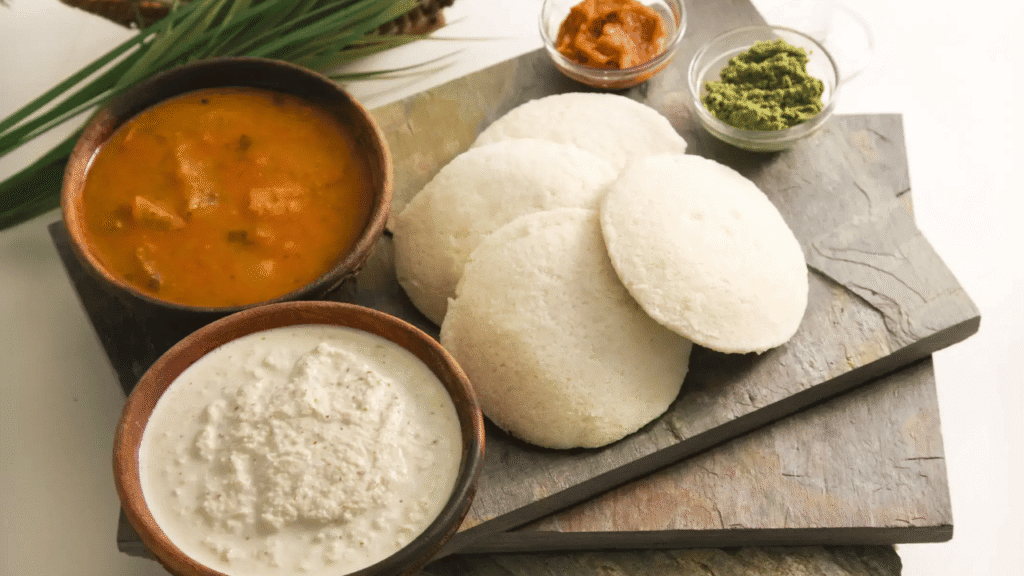
As soon as the Doodle went live, #IdliLove started trending on X and Instagram. Thousands of users shared personal stories about idli being their first school lunchbox meal, a comfort food during illness, or the taste of home while living abroad. The tribute evoked memories of:
- family breakfasts around steaming idlis,
- fragrant coconut chutney and curry leaves,
- the emotional bond of homemade food.
Many also praised Google for honouring Indian food culture authentically without stereotypes.
Google’s Food Doodle Series
Google has previously celebrated culturally significant foods like:
- Japan’s Ramen
- Mexico’s Tamales
- Turkey’s Baklava
- France’s Baguette
Now, idli joins this global culinary hall of fame through Google’s iconic Doodle series which highlights foods that connect people universally.
The Cultural Importance of Idli
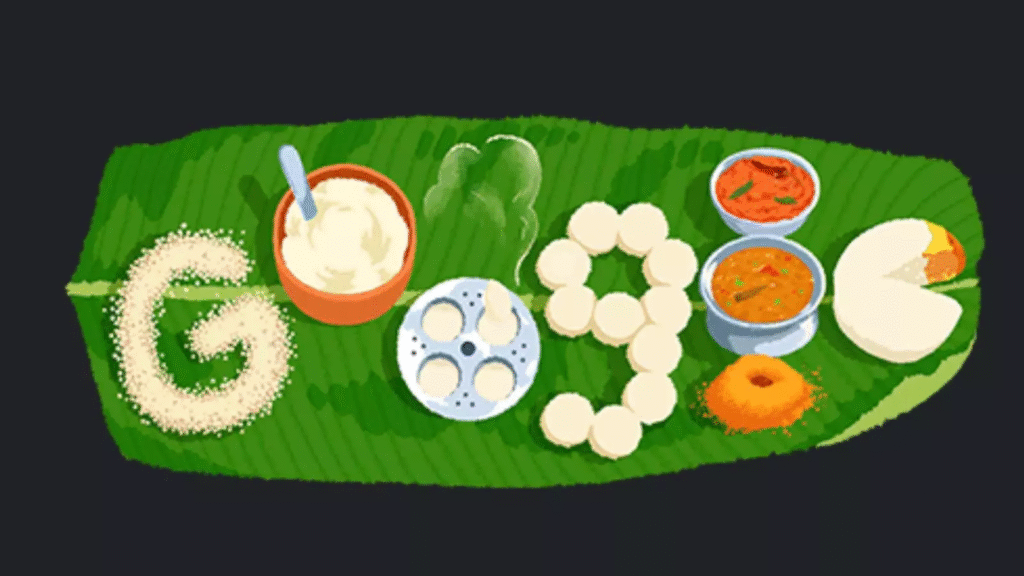
Idli transcends class, religion, and region. From small roadside stalls in Tamil Nadu and Karnataka to star hotels in Delhi, Singapore, and Dubai ; idli is loved everywhere. It represents:
- Affordability – filling yet pocket-friendly
- Nutrition – balanced with carbs, protein, and minerals
- Simplicity – made with just four core ingredients
- Emotion – evokes warmth and nostalgia
Why This Tribute Matters
Google’s celebration of idli is more than just a food appreciation post. It reflects global recognition of Indian cuisine as part of world culture. Simple foods like idli remind us that tradition never grows old; it evolves, travels, and connects people across borders. This tribute also highlights the hidden richness of Indian food heritage, rooted in everyday life rather than luxury dining. In a world chasing complex cuisines, idli stands timeless soft, humble, and strong in identity.
Divine Wisdom Behind Everyday Simplicity: Teachings of Tatvdarshi Saint Rampal Ji Maharaj Ji
Even the simplest acts in life, like preparing and sharing food, carry a deeper spiritual message. Tatvdarshi Saint Rampal Ji Maharaj Ji teaches that true nourishment is not just for the body but for the soul. Just as idli symbolizes simplicity, patience, and the harmony of natural processes, spiritual life requires similar care, absorbing knowledge gradually, cultivating virtues, and purifying the mind. He emphasizes that worldly actions are meaningful only when aligned with devotion to the Supreme God, and understanding His teachings elevates human life beyond routine existence.
Through His unique spiritual knowledge, Tatvdarshi Saint Rampal Ji Maharaj Ji guides seekers on how to attain eternal bliss, liberation from worldly miseries, and inner peace. He explains that mere rituals or symbolic actions are incomplete without the awareness and practice of true devotion. By following the path taught by Tatvdarshi Saint Rampal Ji Maharaj Ji, one can experience the ultimate purpose of life, realizing the eternal connection with the Almighty.
For more teachings and divine knowledge, visit www.jagatgururampalji.org or watch on the official YouTube channel: Sant Rampal Ji Maharaj.
FAQs on Google Idli Doodle Celebration 2025
1. Why did Google celebrate idli with a special Doodle?
Google released a special Doodle on October 11, 2025 to celebrate idli as a cultural icon of India. The tribute highlighted idli’s simplicity, nutritional value, and emotional connection with Indian families, while honouring its role as a unifying traditional dish.
2. Why was the Idli Doodle released on October 11 when World Idli Day is on March 30?
Although World Idli Day is observed on March 30, Google’s Idli Doodle on October 11 was not linked to any anniversary. It was part of Google’s “Food and Drink” series, created to honour globally loved cultural dishes without waiting for a specific occasion.
3. What did the Google Idli Doodle show?
The Doodle creatively transformed the Google logo using elements of idli preparation: rice grains, batter, steamed idlis, chutneys, and sambar all displayed on a banana leaf. It showcased the entire journey of idli from ingredients to serving.
4. Where did idli originate?
Though widely considered a South Indian dish, food historians debate its origin. One theory suggests idli evolved from a steamed rice cake in medieval Indonesia, while another claims Arab traders brought a similar recipe to South India. However, the modern idli truly evolved in Indian kitchens over centuries.
5. Why is idli considered healthy?
Idli is steamed and prepared from fermented rice and urad dal batter, making it light, easily digestible, and rich in probiotics. It is naturally vegan, gluten-free, and low in oil, making it one of the healthiest breakfast options globally.

